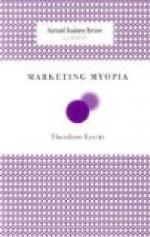William Harvey.
INTRODUCTION
As we are about to discuss the motion, action, and use of the heart and arteries, it is imperative on us first to state what has been thought of these things by others in their writings, and what has been held by the vulgar and by tradition, in order that what is true may be confirmed, and what is false set right by dissection, multiplied experience, and accurate observation.
Almost all anatomists, physicians, and philosophers up to the present time have supposed, with Galen, that the object of the pulse was the same as that of respiration, and only differed in one particular, this being conceived to depend on the animal, the respiration on the vital faculty; the two, in all other respects, whether with reference to purpose or to motion, comporting themselves alike. Whence it is affirmed, as by Hieronymus Fabricius of Aquapendente, in his book on “Respiration,” which has lately appeared, that as the pulsation of the heart and arteries does not suffice for the ventilation and refrigeration of the blood, therefore were the lungs fashioned to surround the heart. From this it appears that whatever has hitherto been said upon the systole and diastole, or on the motion of the heart and arteries, has been said with especial reference to the lungs.
But as the structure and movements of the heart differ from those of the lungs, and the motions of the arteries from those of the chest, so it seems likely that other ends and offices will thence arise, and that the pulsations and uses of the heart, likewise of the arteries, will differ in many respects from the heavings and uses of the chest and lungs. For did the arterial pulse and the respiration serve the same ends; did the arteries in their diastole take air into their cavities, as commonly stated, and in their systole emit fuliginous vapours by the same pores of the flesh and skin; and further, did they, in the time intermediate between the diastole and the systole, contain air, and at all times either air or spirits, or fuliginous vapours, what should then be said to Galen, who wrote a book on purpose to show that by nature the arteries contained blood, and nothing but blood, and consequently neither spirits nor air, as may readily be gathered from the experiments and reasonings contained in the same book? Now, if the arteries are filled in the diastole with air then taken into them (a larger quantity of air penetrating when the pulse is large and full), it must come to pass that if you plunge into a bath of water or of oil when the pulse is strong and full, it ought forthwith to become either smaller or much slower, since the circumambient bath will render it either difficult or impossible for the air to penetrate. In like manner, as all the arteries, those that are deep-seated as well as those that are superficial, are dilated at the same instant and with the same




